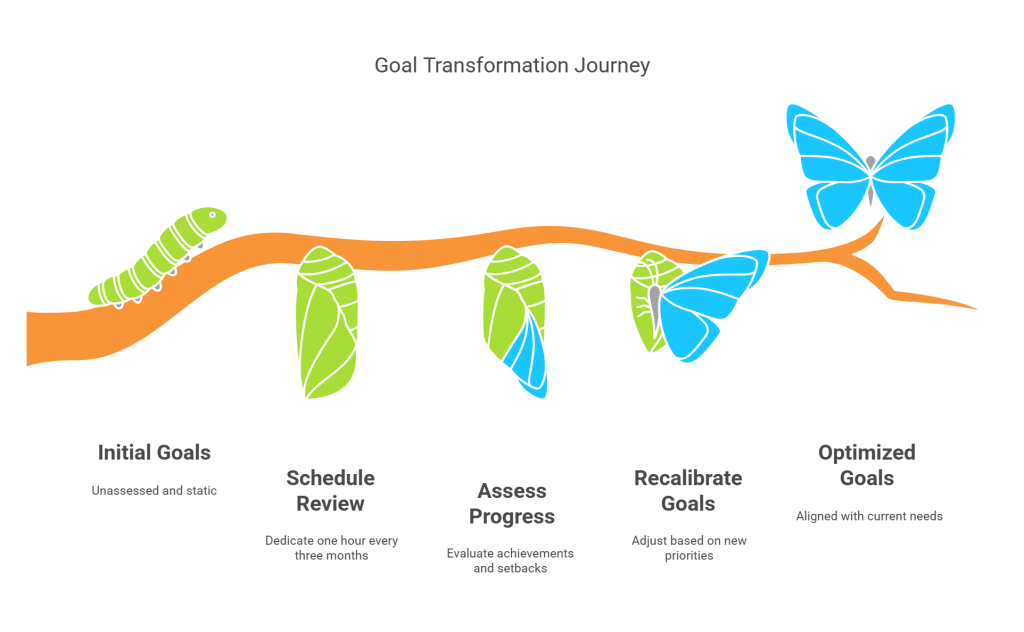
Balance for Growth: Harmonizing Work, Life, and Personal Ambitions
In today’s fast-paced world, finding harmony between work and life is crucial. But how can balance truly fuel success? Understanding work-life harmony can enhance growth both personally and professionally. Unlike conventional balance, harmony blends seamlessly, creating a fulfilling life without compromise. This blog post dives into practical strategies and inspiring stories for fostering well-being through balance. Let’s explore how you can achieve your goals while fostering a lifestyle that leads to lasting success and happiness. Discover the keys to unlocking a harmonious life!
Key Takeaways:
- Work-life harmony implies integrating work and personal life instead of balancing them, using overlaps to save time and enhance both areas.
- Benefits include reduced guilt, increased energy, creativity, job satisfaction, and stronger relationships.
- Achieve harmony by using tools like shared calendars and priority matrices, and align tasks with personal interests.
- Personal growth involves defining objectives, managing time, practicing mindfulness, building resilience, and setting realistic goals.
- Career-life balance requires defining personal success, prioritizing tasks, managing time, staying adaptable, and fostering supportive relationships.
- Fostering balance promotes mental and physical health, reduces stress, and strengthens relationships.
The blog may include AI-assisted content to enhance readability and engagement.
How Can Work-Life Harmony Enhance Personal and Professional Growth?
Balancing work and personal life is a question I get almost every day. The key isn’t balance, though—it’s harmony. Work-life harmony allows you to blend both areas into a unified existence, where one naturally supports the other. Unlike traditional work-life balance, which suggests equal division between two sides, harmony looks more like a symphony where every “note” plays together without needing to split time into rigid halves. This difference lies at the heart of achieving work-life synergy.
To integrate work and life seamlessly, start by identifying overlap points. For example, if you love writing, consider how journaling can help both personal reflection and professional brainstorming. Synergy comes from recognizing how one activity can serve dual purposes. Take mentoring as another example—it grows your leadership skills for work while allowing personal fulfillment by helping others.
The benefits of a harmonious approach are clear. You feel less guilt for prioritizing one area over another because your efforts make sense together. With more energy and peace, creativity thrives. Over time, you may notice stronger relationships and better job satisfaction since neither part of your life feels left behind.
Tools to support integration include using a shared calendar for family and work commitments. A “priority matrix” helps too: Rank tasks by urgency and importance to ensure focus only goes to what truly matters. For quick examples, people like Oprah Winfrey model this harmony by aligning their values across every role they play.
Work-life harmony isn’t about perfection. It’s about fluidity.
What are Effective Strategies for Achieving Personal Growth?
Achieving personal growth starts with clarity. To grow, you need a clear sense of what matters most to you. Begin by identifying your personal growth objectives and sorting your priorities. Think about what brings you joy, what skills you want to develop, and where you see yourself in the future. Write these objectives down—it’s easier to focus on your path when you can see it clearly.
Balancing your ambitions with daily responsibilities is another key to growth. We all have routines, chores, and commitments. Making time for personal goals means refining how you use your time. I recommend setting aside specific blocks of time in your day for pursuits that align with your objectives. Even 15 minutes a day can make a difference. To-do lists and simple schedules can work wonders to organize your efforts.
Mindfulness and reflection are powerful tools for growth. Mindfulness helps you stay in the moment and avoid feeling overwhelmed. Start with something as simple as taking five deep breaths to reset during a busy day. Reflection, on the other hand, gives you space to evaluate your progress. Keep a journal or spend a few minutes each week asking yourself: What worked? What didn’t? What can I do better?
Building resilience and adaptability is essential when growing as a person. Challenges and failures happen, but they hold lessons. When things don’t go as planned, take a step back and focus on the lesson learned, not the problem itself. For example, if you failed at a task, ask yourself how you can improve for the next attempt. Resilience isn’t about avoiding failure; it’s about learning from it and continuing to move forward.
Your strengths and weaknesses play a huge role in personal growth. Focus on leveraging your strengths—the skills and talents you naturally excel at—and look for opportunities to improve your weaker areas. You don’t need to fix every flaw at once. Choose one weakness to work on, and take small, manageable steps to improve. Growth should feel challenging but not impossible.
Lastly, set realistic goals and track your progress. Unrealistic goals lead to burnout and frustration. Break big objectives into smaller, actionable steps. Create milestones and celebrate once you’ve reached them. Tracking your growth can be as simple as reviewing your achievements weekly, whether in a notebook or an app designed for goal-setting. Seeing your progress reinforces your efforts and motivates you to keep going. If you need more ideas, explore these personal growth strategies.
Remember: growth isn’t about being perfect; it’s about being better than you were yesterday.
“Growth blooms when clarity meets commitment in daily life.”
How to Achieve Balance for Career and Life Success?
Success in life and work is personal. For me, it’s all about ensuring both career goals and personal well-being walk hand in hand. To balance these, I recommend focusing on priorities, time, and adaptability.
First, define what success means in both your career and personal life. Ask yourself: What do I truly value? For some, career success might mean climbing the corporate ladder. For others, it could mean having enough flexibility to spend time with family. “Success is not the key to happiness. Happiness is the key to success” — a quote I live by from Albert Schweitzer. When I aligned my career goals with my personal values, I felt my stress decrease, and my focus sharpen.
Now, let’s talk about prioritizing. You might ask, how do you balance work and life effectively? Here’s the answer: Start by writing down your top three career goals and top three personal priorities. Then look at where they overlap. This overlap is often where you should focus your energy. Personally, I use this effective prioritization technique to make sure I don’t overcommit myself.
Next, time management is essential. I find that setting boundaries for work hours and scheduling personal downtime keeps things from clashing. Use tools like calendar apps or timers to help structure your day. These not only remind you of tasks but let you block out time for the things that matter most to you.
Flexibility is also vital. Your goals will change, so your strategies must adapt. For example, if a big project arises at work, I sometimes shift less critical personal plans. On the flip side, I also adjust work if an important family event comes up. Balance isn’t static—it’s a constant adjustment based on what needs your attention the most at any moment.
Finally, don’t forget the importance of supportive relationships. Network with people who respect your boundaries and promote balance. A good professional connection might offer tips for managing workload. A close friend can remind you to take a breath and enjoy life outside of work. These relationships create a network of balance.
By defining your goals, managing time well, staying flexible, and strengthening your connections, you can optimize your career and life balance. It’s been the strategy that’s kept me steady through challenges and thriving in all aspects of life.
What are the Benefits of Fostering a Balanced Lifestyle?
Fostering a balanced lifestyle creates a foundation for both mental and physical health. Balance helps keep stress levels low, improves focus, and builds resilience. When life feels smooth and steady, your body and mind respond with fewer signs of strain. For example, regular sleep combined with time for exercise can strengthen your immune system and boost your energy levels.
Balance also serves as a powerful tool for reducing stress. When I’ve felt overwhelmed, I’ve noticed that breaking tasks into smaller steps can bring clarity. This approach limits overcommitment, ensuring there’s room for downtime. Research supports what many have learned firsthand: managing conflicts between work and personal time directly reduces anxiety.
Prioritizing balance strengthens relationships, too. When you make time for family and friends, bonds grow deeper. A balanced lifestyle lets you stay present and engaged, showing those you care about that they’re a priority. Simple habits, like setting phones aside during meals, help create moments of genuine connection.
Building self-care into routines is another cornerstone of balance. I’ve found that activities like reading, painting, or taking a short walk can provide incredible renewal. These moments bring joy and stop burnout before it takes root. Leisure isn’t a luxury—it’s one of the most important parts of a well-rounded life.
A balanced home life adds the final layer. Designing spaces for relaxation—or even organizing a clutter-free corner—can support your overall well-being. Combine this with hobbies that excite and challenge you, turning spare time into something meaningful. Whether it’s gardening or learning an instrument, fulfillment amplifies when the things you love become part of daily life.
By promoting well-being through balance, you ensure that every part of your day works together, like a finely tuned instrument.
“Balance is the bridge between chaos and calm.”
How Can You Harmonize Ambitions for Sustainable Success?
Harmonizing personal and professional goals starts with knowing what truly matters to you. Ask yourself: What do I value most in my life and career? The answer to this question shapes your decisions, helping align your values with your ambitions. When your career ambitions conflict with your personal values, it creates stress, not success. A clear alignment ensures your priorities drive your choices, not external pressures.
Long-term goals thrive on small, steady steps rather than big, overwhelming leaps. Progress comes from consistent actions that move you closer to your vision. Let’s say you want to master a new skill for your job or pursue a long-term passion project. Break the task into daily or weekly steps. That way, the process feels achievable and keeps you motivated.
Balancing short-term tasks with long-term visions is tougher than it sounds, but it’s key to success. I’ve found that short-term wins can sometimes steal focus from the bigger picture. Create time weekly to reflect on what’s important versus just urgent. Use a planner or a simple checklist to stay on track toward those long-term ambitions while still handling immediate demands.
Feedback is your secret weapon for continuous improvement. Whether it’s from your boss, a mentor, or even friends, take critiques seriously. It sharpens your skills and clarifies what works and what doesn’t. You grow faster when you actively seek advice rather than waiting for it. Regularly ask, “What can I do better?”
Motivation often comes and goes, so strategies are vital to keep the fire alive. I rely on celebrating small achievements, no matter how minor. Even finishing a task on time can boost your enthusiasm to tackle the next challenge. Collaborating with others also recharges motivation. Shared success feels more meaningful, and teamwork introduces perspectives that enrich your journey.
Harmony-focused success tips include knowing when to lean on others and when to trust your capabilities. Success through effective harmonization isn’t about giving equal effort to everything—it’s about knowing what deserves your energy right now.
What Are the Key Steps to Achieving Well-Being and Growth?
To achieve well-being and growth, you need deliberate steps that align with your values and goals. Success here isn’t by accident; it’s built through consistent habits.
One key step is implementing a holistic approach to personal and professional growth. This means recognizing that growth isn’t just about your career or physical health—it’s about mental, emotional, and social well-being, too. For example, building strong relationships at work and home fuels a support system. This creates space for learning and regaining energy when challenges arise. Think about how effective life harmony practices can bring coherence to your daily life.
Embracing change is never easy, but growth thrives in discomfort. A growth mindset helps you see missteps as lessons instead of failures. I’ve found it useful to ask myself after a setback, “What did I learn today?” Over time, this small act rewires your thinking, leading to resilience. As Carol Dweck, the author of Mindset, tells us, “Becoming is better than being.”
Another important step is encouraging a culture of continuous learning and development—both within and beyond your environment. When I got serious about fostering growth through balance, I joined a local group that shared professional insights monthly. It connected my ambitions with actionable learning, and I could instantly see how it elevated my mindset. Access tools like seminars or online courses, and build networks where shared growth thrives.
To stay on track, practice self-assessment techniques regularly to monitor your progress. Journaling works well for tracking growth. Each month, I write down how I improved—or didn’t—in areas like emotional balance, health commitments, and career advancements. Writing clarifies whether you’re on the path or need course correction. It reveals patterns you might otherwise miss.
Finally, invest in building emotional intelligence (EQ). Reflect on how you handle stress or engage in relationships. One exercise I’ve found impactful is this: after a tough conversation, ask yourself, “How did I empathize and respond during this exchange?” EQ helps you not just to balance your reactions but to deepen your connections.
When you have clarity, creating a personal mission statement becomes possible. This serves as your guiding star, helping answer big questions like, “Why am I pursuing this?” Write it down and revisit it often. Mine references balance and discipline, reminding me why every step matters in my journey.
The truth is, well-being and growth don’t happen overnight. But with these steps, you guide your actions into harmony with your higher goals, creating the life you envision.
How Can Life Goal Harmonization Lead to Greater Fulfillment?
Harmonizing life goals starts with clarity. To achieve alignment in life goals, I believe you need to first define what truly matters to you. Ask yourself: What are my personal and career priorities? Write them down to see how they overlap or conflict. For me, recognizing these overlaps has been the key to better focus. When personal and career goals align, actions feel more meaningful, and life feels less scattered.
One method to merge overlapping goals is seeing them as complementary rather than separate. For example, if you value growth in your career and quality family time, think about how one can serve the other. Can communication skills gained at work improve relationships at home? Can learning patience with loved ones translate to better leadership at work? Bridging these gaps creates a harmonious balance that feels natural.
Goal-setting is not a one-time thing. Regularly reviewing and adjusting goals is what keeps them relevant. I use a simple tactic: every three months, I set aside one hour to assess my progress and tweak my goals. I also use planners and visual aids to write, organize, and track everything. A whiteboard with sections for work, family, and personal goals is an excellent tool for staying focused. Seeing your goals visually can help you grasp how they fit together or where they might compete.

Another key is striking a balance between ambition and contentment. It’s easy to become so driven by ambitions that you lose sight of the joys in front of you. I’ve found that reflecting on daily wins, no matter how small, helps me stay grounded. “Happiness is not a matter of intensity but of balance, order, rhythm, and harmony,” said Thomas Merton. I remind myself of this when I feel stretched too thin.
Lastly, be open about your aspirations with those closest to you. Talk to your partner, family, or friends about what you’re striving for. Their input can bring new ideas or ease any tensions that arise from conflicting priorities. When you align your goals with those of your loved ones, you create support instead of stress. This open communication fosters trust and makes your journey toward fulfillment feel shared, not lonely.
For additional insights on aligning life goals with daily habits, I recommend exploring these goal visualization tools. Making your aspirations tangible is a simple yet powerful way to stay on track.
Conclusion
Work-life harmony isn’t just a buzzword; it’s a path to growth. By understanding how it differs from balance and using strategies for integration, you unlock full potential. This shift enhances health, reduces stress, and fosters stronger relationships. Success in both personal and professional life relies on aligning values, setting clear goals, and embracing flexibility. Use technology and supportive networks to simplify your journey. With practiced resilience and thoughtful reflection, you can live intentionally and joyfully, harmonizing ambitions and achieving sustainable success. Remember, this harmonious approach empowers true fulfillment and lasting well-being.







-
-
2 months
Tagged Balance, Empowerment, Feminine Energy, Mindfulness, Self-Care